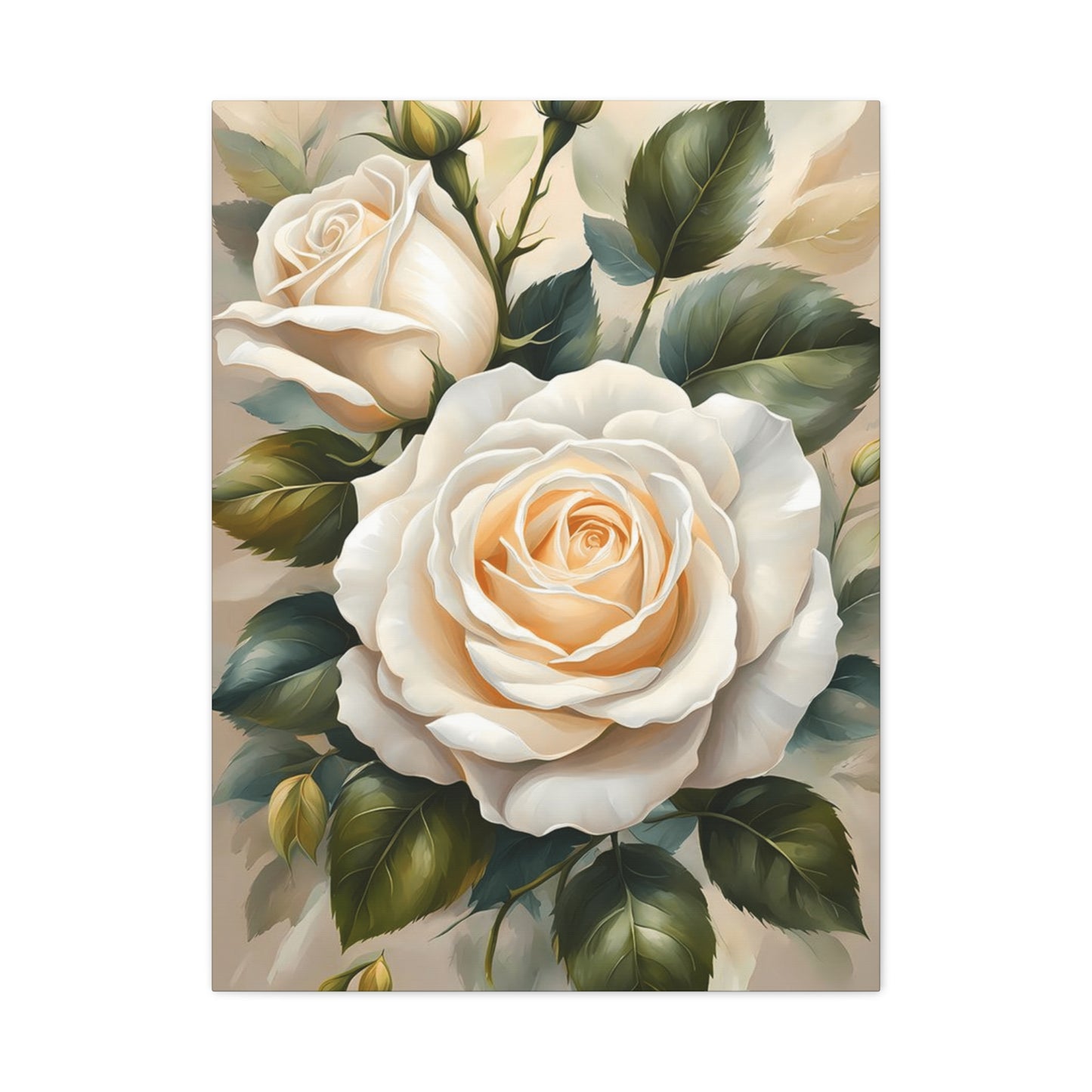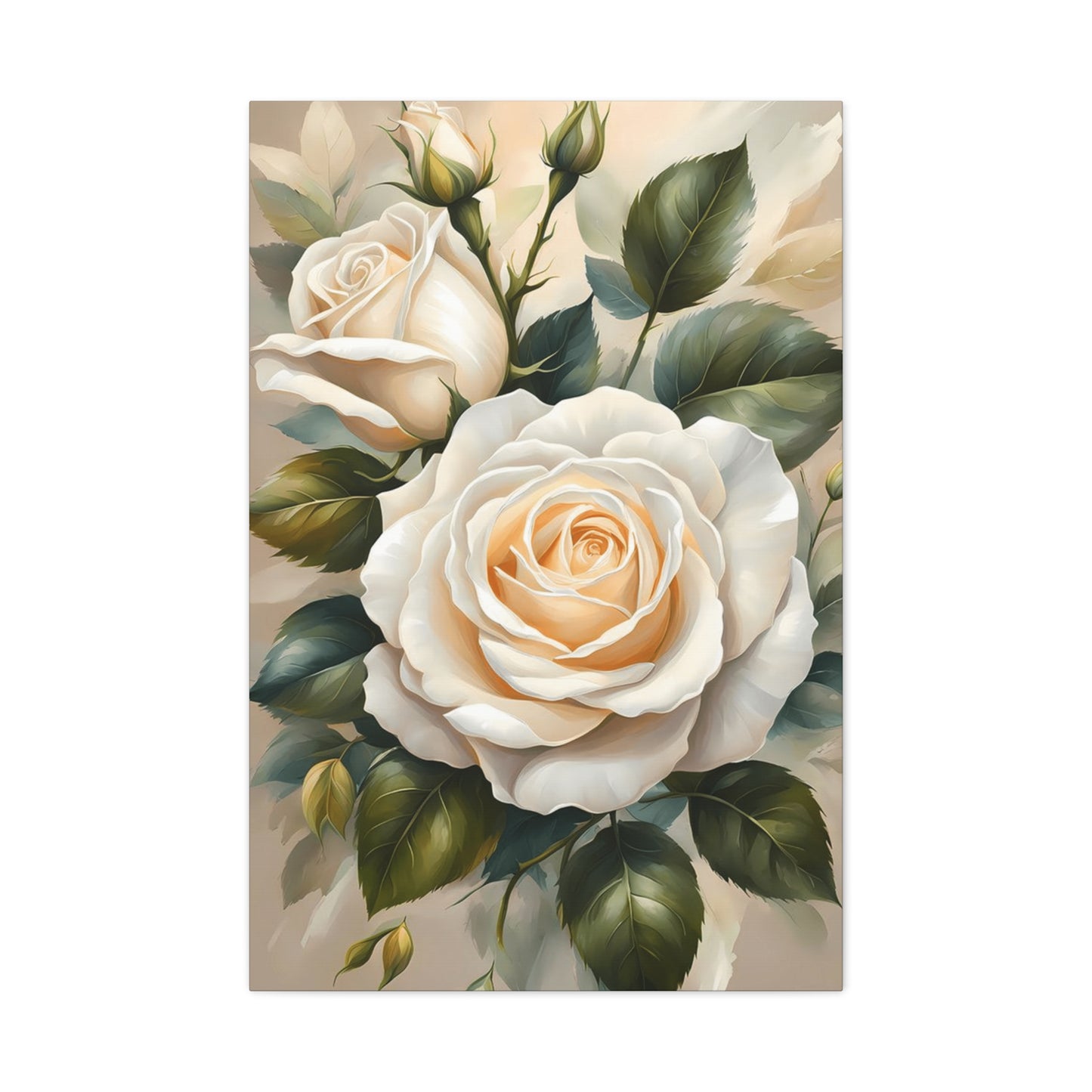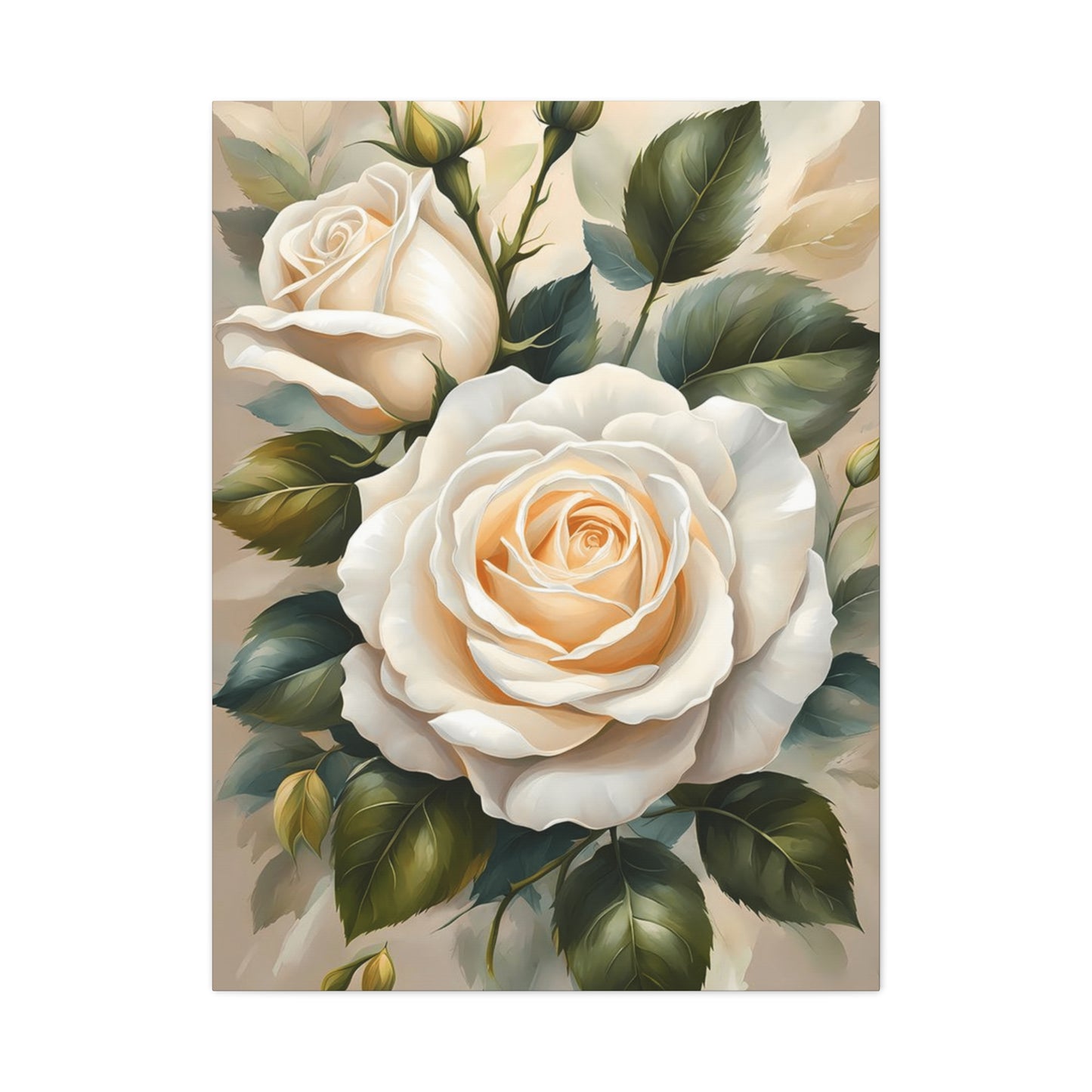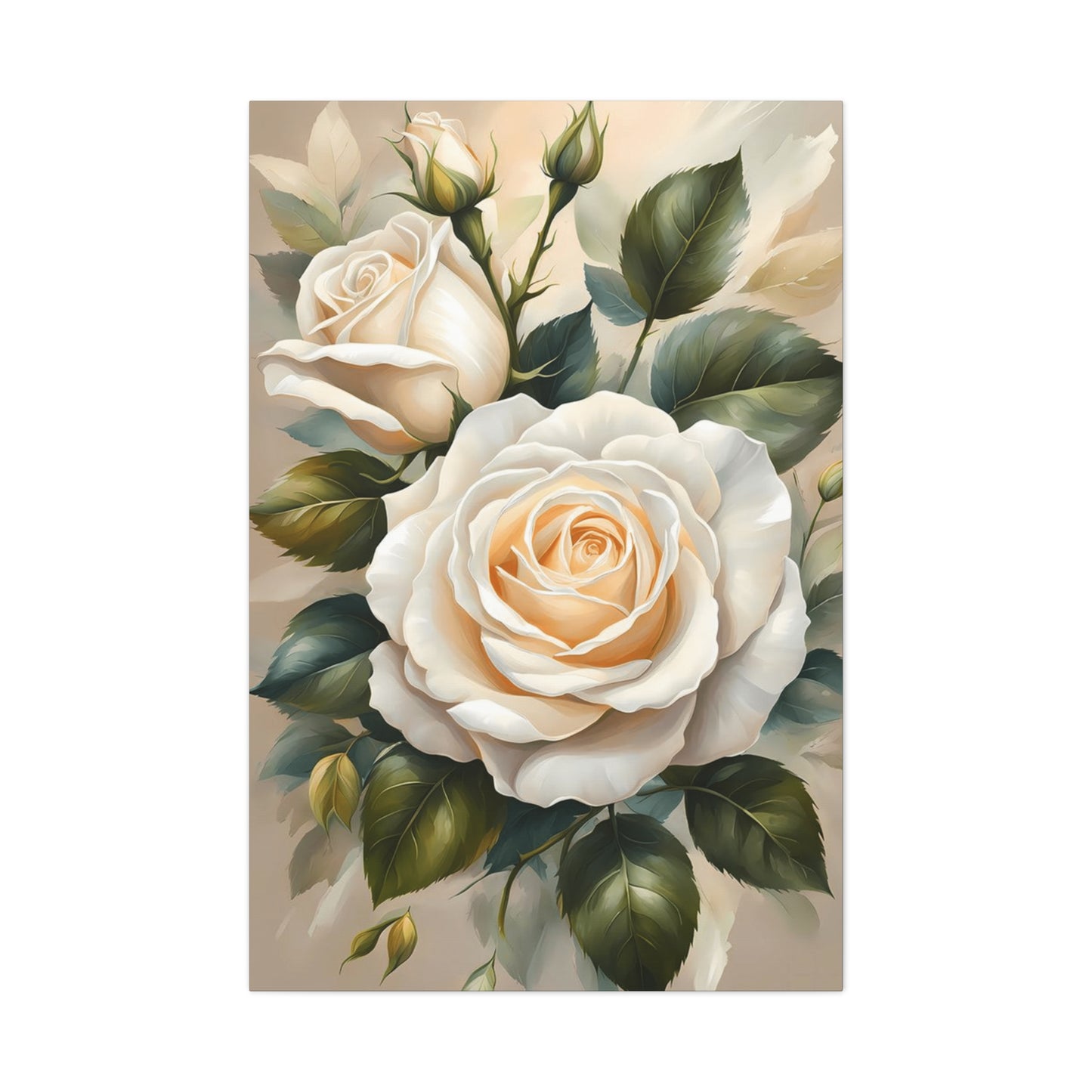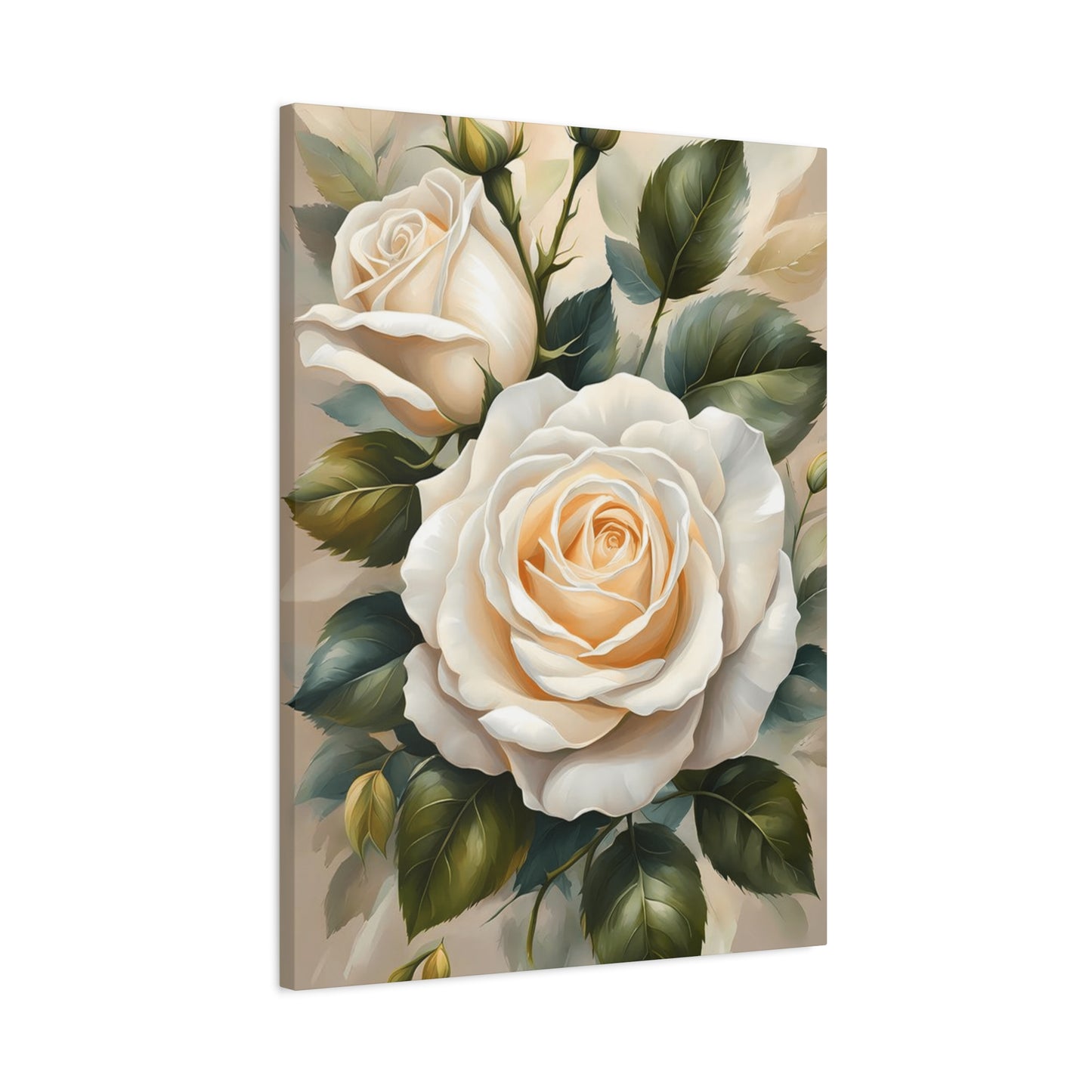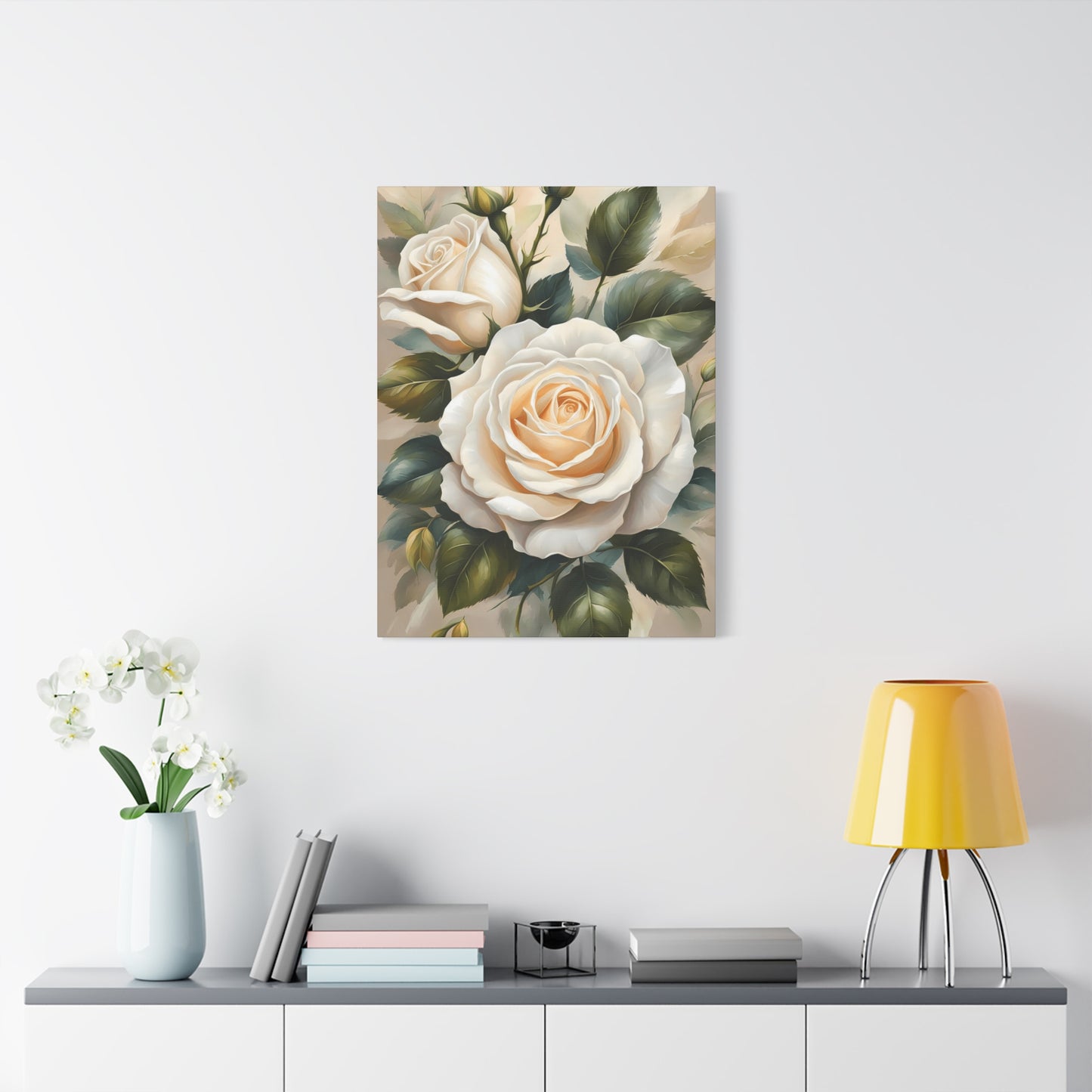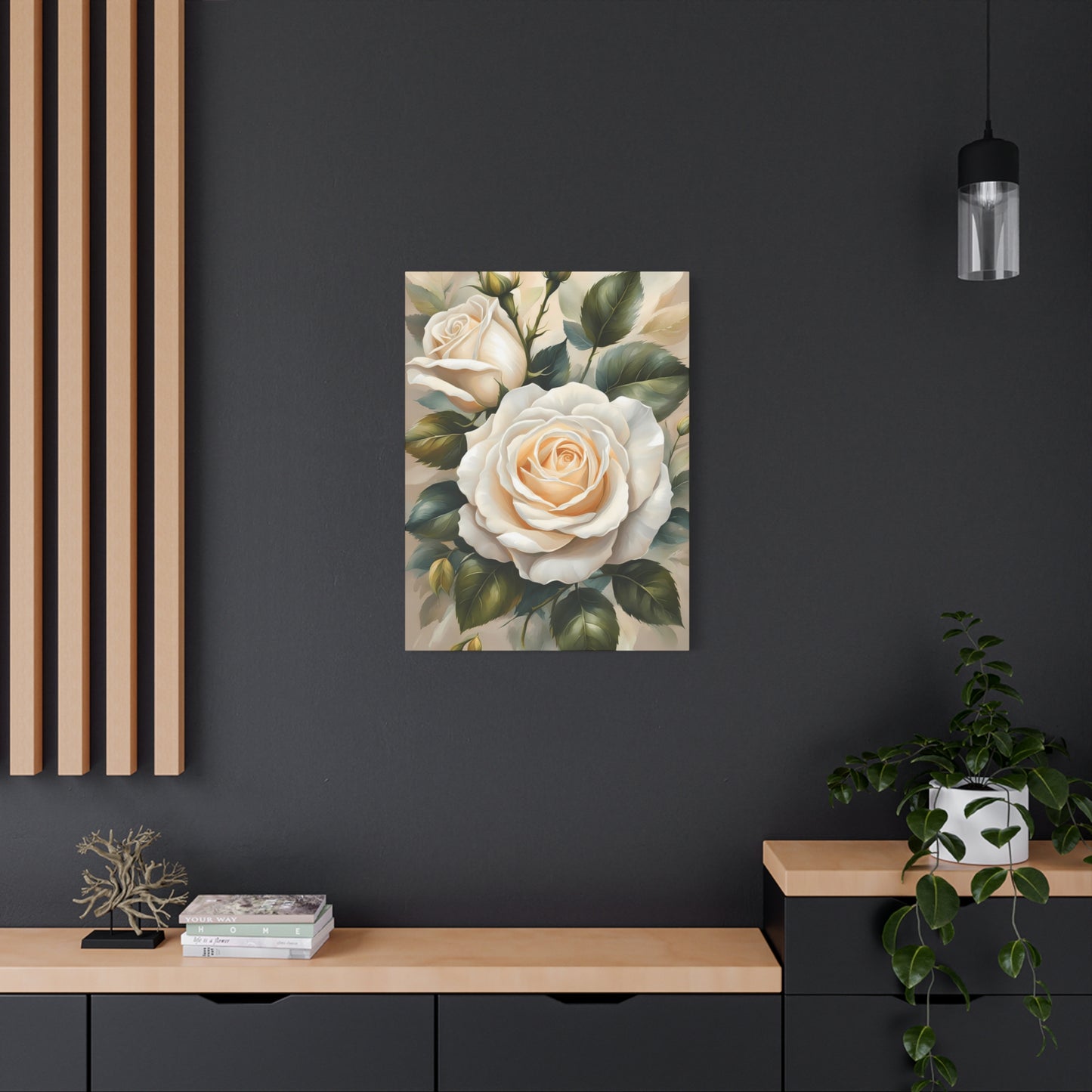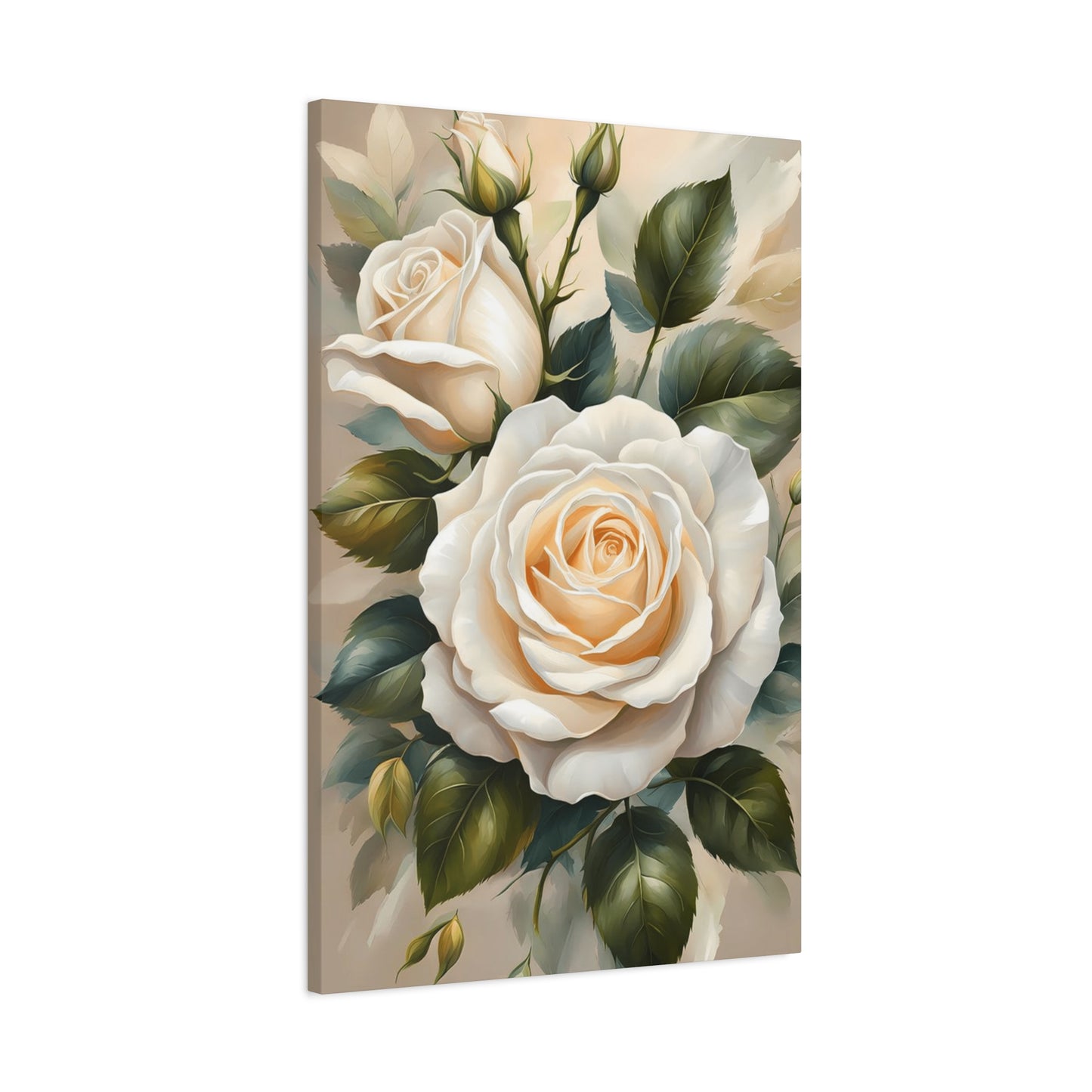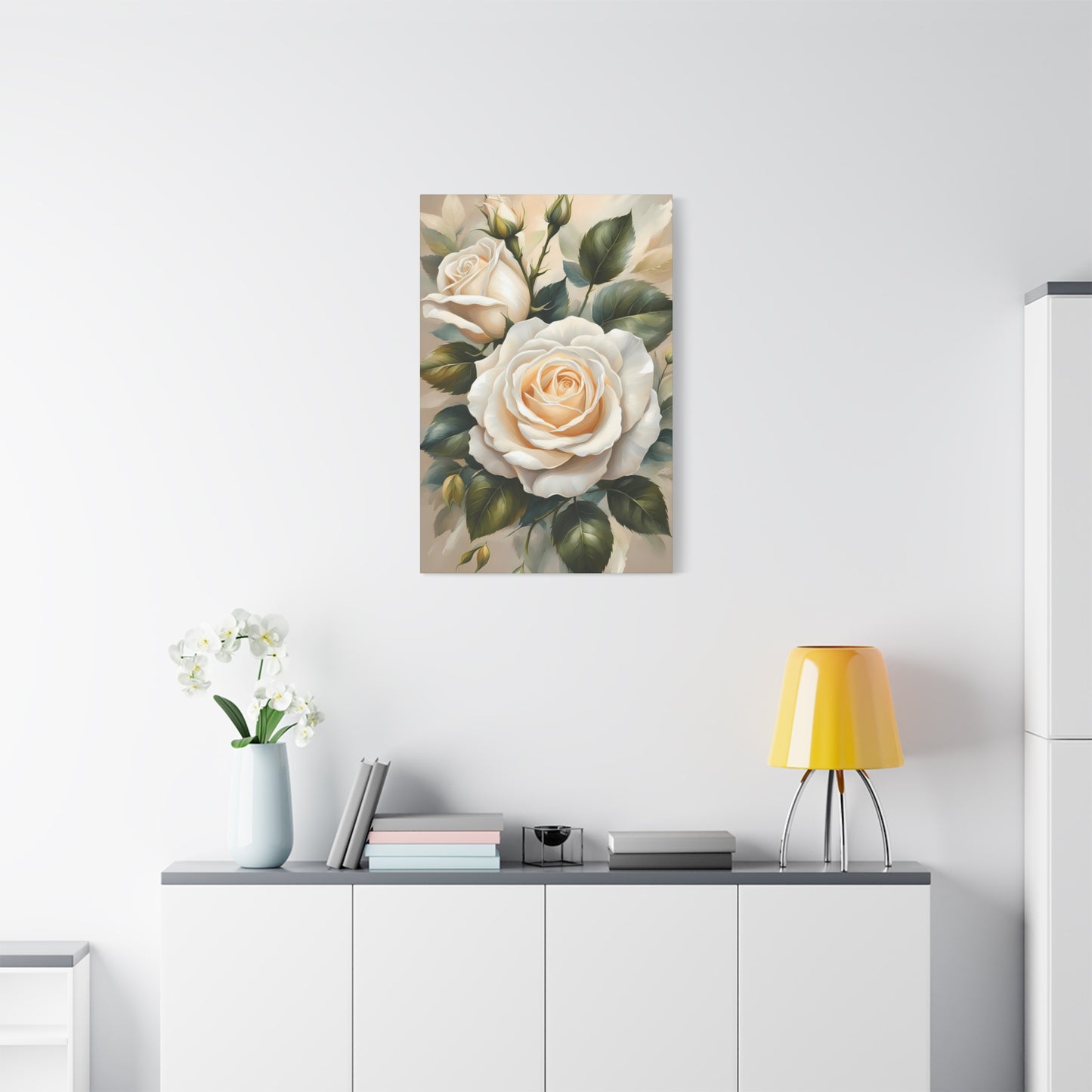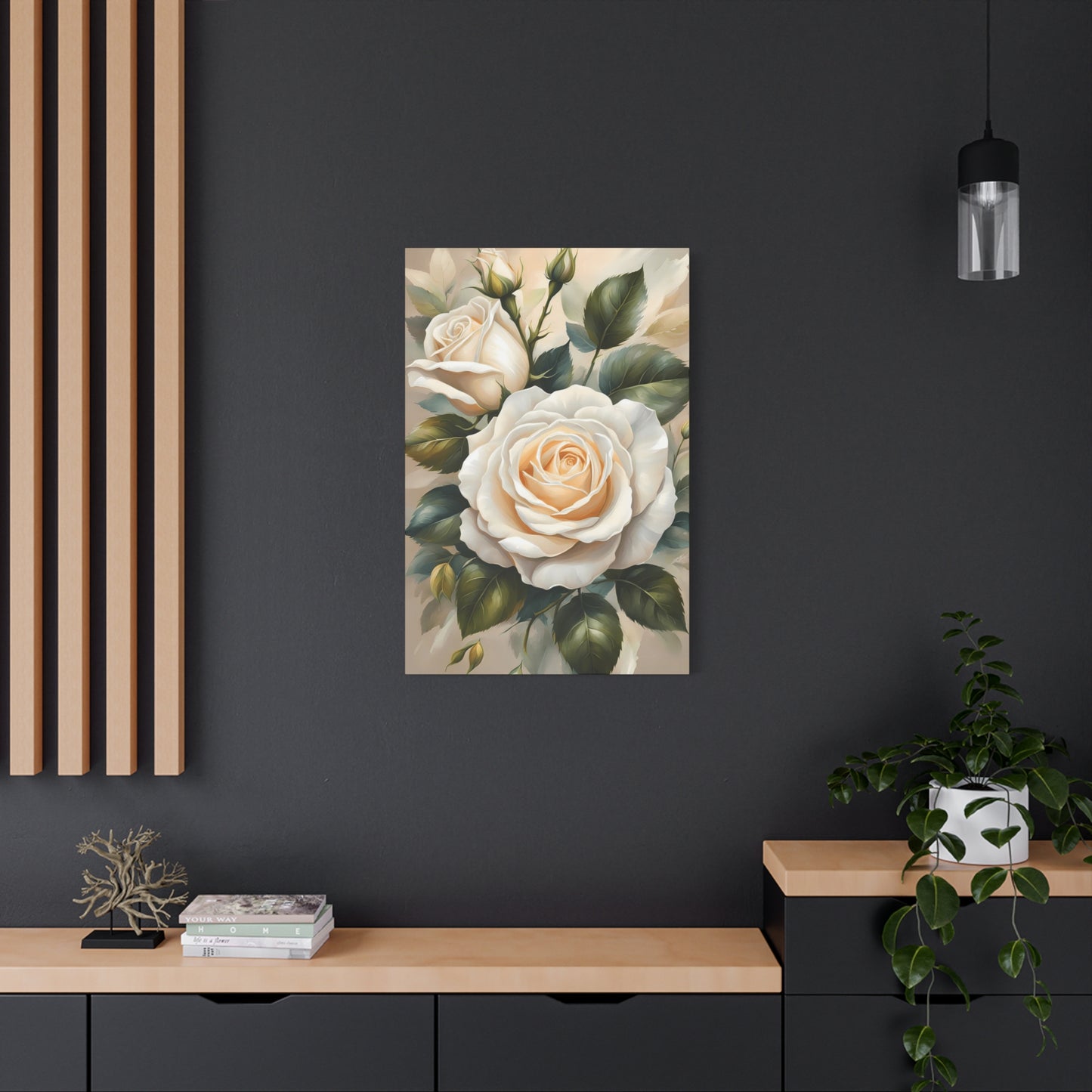Eternal Elegance: Rose Wall Art That Defines Sophisticated Home Aesthetics
Rose wall art represents one of the most enduring and versatile forms of decorative expression in contemporary home aesthetics. These timeless floral representations have transcended fleeting trends to become foundational elements in creating sophisticated living environments that speak to both emotional depth and visual refinement. The appeal of rose-themed artwork lies not merely in its aesthetic beauty but in its profound ability to transform ordinary rooms into sanctuaries of elegance and personal expression.
The enduring popularity of rose wall art stems from its remarkable versatility and universal appeal. Unlike many decorative elements that may feel dated within a few seasons, rose imagery maintains its relevance across generations, cultures, and design philosophies. This permanence makes rose wall art an intelligent investment for homeowners seeking to create lasting beauty in their living environments while maintaining flexibility for future design evolution.
When selecting rose wall art for your home, the considerations extend far beyond simple aesthetic preference. The choice involves understanding how these pieces interact with existing architectural elements, lighting conditions, color palettes, and the overall emotional atmosphere you wish to cultivate. Rose wall art serves as both a focal point and a harmonizing element, capable of tying together disparate design elements while adding layers of visual and emotional complexity to any room.
The psychological impact of rose imagery in home environments cannot be overstated. These flowers, universally associated with love, beauty, and renewal, bring positive energy into living environments while creating visual anchors that draw the eye and invite contemplation. The presence of rose wall art in a home communicates sophistication, emotional intelligence, and an appreciation for enduring beauty over temporary trends.
Modern manufacturing techniques and artistic innovations have expanded the possibilities for rose wall art far beyond traditional paintings and prints. Contemporary options include photographic interpretations, digital art, mixed media pieces, sculptural elements, and innovative printing techniques on various materials. This diversity ensures that every homeowner can find rose wall art that perfectly aligns with their personal aesthetic preferences and existing decor themes.
The strategic placement of rose wall art requires careful consideration of viewing angles, lighting conditions, and the intended emotional impact of each piece. Whether serving as a statement element in a grand entrance hall or providing gentle visual interest in an intimate reading nook, rose wall art must be positioned to maximize both its aesthetic impact and its contribution to the overall room functionality.
Color psychology plays a crucial role in selecting appropriate rose wall art for different environments. Deep red roses convey passion and drama, making them suitable for formal dining areas or master bedrooms, while soft pink interpretations create gentle, nurturing atmospheres perfect for nurseries or meditation areas. White roses suggest purity and sophistication, complementing minimalist or traditional design schemes, while yellow roses bring warmth and energy to kitchen areas or home offices.
The scale of rose wall art pieces must align with the proportions of the intended display area and the surrounding architectural elements. Large-scale pieces can serve as dramatic focal points in spacious areas, while smaller groupings of related pieces can create visual rhythm and movement in more intimate settings. Understanding these proportional relationships ensures that rose wall art enhances rather than overwhelms the existing room dynamics.
Perpetual Charm: The Enduring Appeal of Rose-Themed Artwork
The timeless nature of rose wall art transcends temporary design trends because it taps into fundamental human responses to beauty, nature, and emotional symbolism. Unlike decorative elements that may feel dated within a few seasons, rose imagery maintains its relevance through changing design philosophies, cultural shifts, and personal life transitions. This enduring quality makes rose wall art a wise investment for homeowners seeking to create lasting beauty in their living environments.
Historical perspectives on rose imagery reveal its consistent presence across cultures, art movements, and time periods. From ancient Persian miniatures to Renaissance paintings, from Art Nouveau posters to contemporary digital art, roses have maintained their position as symbols of beauty, love, and life itself. This historical continuity provides confidence that current rose wall art selections will remain aesthetically relevant and emotionally meaningful for decades to come.
The versatility of rose wall art allows it to complement virtually any design aesthetic, from ultra-modern minimalism to ornate traditional styles. Contemporary interpretations can feature clean lines, abstract representations, or photographic realism, while traditional approaches might emphasize classical painting techniques, ornate framing, or vintage-inspired treatments. This adaptability ensures that rose wall art can evolve with changing personal tastes and home decor updates.
Seasonal relevance represents another factor contributing to the timeless appeal of rose wall art. Unlike decorative elements tied to specific seasons or holidays, rose imagery remains appropriate and beautiful throughout the year. Spring roses suggest renewal and growth, summer roses evoke abundance and vitality, autumn roses convey maturity and depth, while winter roses provide warmth and hope during colder months.
The emotional resonance of rose imagery creates lasting personal connections that transcend changing design preferences. These pieces often become treasured elements that homeowners carry through multiple moves, room redesigns, and life changes. The personal attachment formed with meaningful rose wall art pieces contributes to their perceived timelessness and continued relevance in evolving living environments.
Investment value represents a practical consideration supporting the timeless nature of quality rose wall art. Well-chosen pieces from respected artists or publishers tend to maintain or increase their value over time, particularly when they represent superior craftsmanship, unique perspectives, or limited production runs. This financial stability, combined with aesthetic longevity, makes rose wall art an intelligent choice for discerning homeowners.
The psychological comfort provided by familiar, beautiful imagery contributes to the enduring appeal of rose wall art. In an increasingly fast-paced world filled with constant change, the presence of timeless beauty in one's living environment provides stability, comfort, and emotional grounding. Rose wall art serves as a visual sanctuary that remains constant while other life elements shift and evolve.
Contemporary artists continue to find fresh approaches to rose imagery, ensuring that this timeless subject matter remains vibrant and relevant. Modern techniques, materials, and perspectives bring new life to traditional themes while maintaining the essential beauty and emotional impact that make roses universally appealing. This ongoing artistic innovation guarantees that rose wall art will continue to offer fresh possibilities for future generations.
Current Movements in Rose-Themed Wall Décor
Contemporary rose wall art reflects broader movements in home decor, artistic expression, and lifestyle preferences. Current trends emphasize authenticity, personal expression, and the integration of natural elements into modern living environments. These movements have influenced how artists approach rose imagery and how homeowners incorporate these pieces into their decorative schemes.
Botanical accuracy has emerged as a significant trend, with artists and photographers creating highly detailed, scientifically precise representations of rose varieties. These pieces appeal to gardening enthusiasts, nature lovers, and those who appreciate the intricate beauty found in natural forms. The trend toward botanical accuracy reflects a broader cultural movement toward environmental awareness and appreciation for natural beauty.
Abstract interpretations of rose imagery have gained popularity among homeowners seeking contemporary artistic expression while maintaining connection to traditional themes. These pieces distill the essential qualities of roses into simplified forms, color relationships, and emotional impressions rather than literal representations. Abstract rose wall art works particularly well in modern and transitional design schemes where traditional floral imagery might feel inappropriate.
Minimalist approaches to rose wall art emphasize clean lines, limited color palettes, and simplified compositions. These pieces align with contemporary preferences for uncluttered living environments while providing the emotional warmth and visual interest associated with floral imagery. Minimalist rose wall art often features single blooms, stark contrasts, or geometric interpretations of traditional rose forms.
Mixed media techniques have expanded the possibilities for rose wall art beyond traditional painting and photography. Contemporary artists incorporate textural elements, metallic accents, three-dimensional components, and innovative materials to create pieces that engage multiple senses and provide varied viewing experiences. These mixed media approaches appeal to homeowners seeking unique, conversation-starting artwork.
Digital art and printing innovations have made high-quality rose wall art more accessible while expanding creative possibilities. Advanced printing techniques can reproduce artwork on various materials including canvas, metal, acrylic, and wood, while digital manipulation allows artists to create unique color combinations, effects, and compositions impossible with traditional media.
Vintage and antique-inspired rose wall art has experienced renewed popularity as homeowners seek to create environments with history, character, and emotional depth. These pieces often feature distressed finishes, aged color palettes, and classical compositions that evoke earlier eras while fitting comfortably into contemporary settings. The vintage trend reflects broader cultural interests in sustainability, craftsmanship, and timeless beauty.
Large-scale rose wall art has become increasingly popular as homeowners recognize the dramatic impact these pieces can create in spacious environments. Oversized prints, multi-panel installations, and wall-spanning compositions transform ordinary walls into stunning focal points that define entire room experiences. This trend toward large-scale art reflects contemporary preferences for bold, impactful decorative statements.
Personalization trends have influenced rose wall art selection, with homeowners seeking pieces that reflect their individual stories, memories, and emotional connections. Custom commissions, personalized color schemes, and meaningful text integration allow rose wall art to become truly personal expression rather than generic decoration. This movement toward personalization reflects broader cultural values emphasizing authenticity and individual expression.
Romantic Atmosphere Through Rose-Themed Prints
Creating romantic atmosphere through rose-themed wall prints requires understanding how color, composition, lighting, and placement work together to evoke desired emotions and experiences. Rose imagery naturally suggests romance, but thoughtful selection and presentation can amplify these associations while creating sophisticated, adult interpretations of romantic themes.
Color selection plays a crucial role in establishing romantic atmosphere through rose wall art. Deep burgundy and wine-colored roses create passionate, intense romantic feelings appropriate for intimate dining areas or master bedrooms. Soft pink roses suggest gentle, nurturing love perfect for creating peaceful, romantic retreats. Coral and peach roses bring warmth and energy to romantic settings while maintaining sophistication and avoiding overly sweet presentations.
Lighting considerations significantly impact the romantic effect of rose wall art. Warm, soft lighting enhances the natural beauty of rose imagery while creating intimate atmosphere. Accent lighting directed specifically at rose wall art pieces can create dramatic shadows and highlights that emphasize texture, color depth, and compositional elements. Candles, table lamps, and dimmer switches allow for lighting adjustments that match different moods and occasions.
Composition styles affect the romantic impact of rose wall art. Single, perfectly formed blooms suggest classical beauty and timeless romance, while abundant garden scenes evoke passionate, overwhelming love. Close-up details of rose petals create intimate, sensual atmosphere, while broader compositions including stems, leaves, and buds suggest growth, renewal, and lasting relationships.
Placement strategies can maximize the romantic impact of rose-themed prints. Positioning pieces at eye level in intimate seating areas creates personal, engaging viewing experiences. Grouping related pieces creates visual rhythm and movement that draws couples together while providing conversation topics and shared aesthetic experiences. Strategic placement near romantic furniture arrangements amplifies the emotional impact of both elements.
Textural considerations enhance the romantic appeal of rose wall art. Canvas prints provide warmth and traditional artistic feeling, while metallic prints add glamour and sophistication. Framed pieces create formal, respectful presentations that suggest the importance of romantic relationships, while unframed pieces feel more casual and approachable. The choice of presentation style should align with the overall romantic atmosphere being created.
Seasonal rotation of rose wall art can maintain romantic interest throughout the year. Spring selections might emphasize new blooms and fresh growth, summer pieces could feature abundant garden scenes, autumn choices might highlight mature roses with rich colors, and winter options could focus on preserved or dried rose arrangements. This seasonal variation keeps romantic decor fresh and engaging.
Personal meaningful integration transforms generic rose wall art into deeply romantic elements. Pieces that commemorate special dates, locations, or shared experiences create emotional connections that enhance romantic atmosphere. Custom commissions featuring roses from wedding bouquets, anniversary gifts, or meaningful garden visits become treasured romantic symbols rather than simple decoration.
Complementary decorative elements can amplify the romantic impact of rose wall art. Soft textiles, metallic accents, ambient lighting, and carefully chosen furniture arrangements work together with rose imagery to create comprehensive romantic environments. The key lies in maintaining balance and avoiding overly theatrical presentations that might undermine the sophisticated romantic atmosphere being created.
Incorporating Rose Artwork Throughout Different Rooms
Successfully styling rose wall art in various rooms requires understanding each environment's unique function, lighting conditions, traffic patterns, and aesthetic requirements. Different rooms call for different approaches to rose imagery, scale, and presentation to achieve optimal visual and emotional impact while maintaining practical functionality.
Living room applications of rose wall art focus on creating welcoming, sophisticated atmosphere that encourages relaxation and social interaction. Large-scale pieces can serve as focal points above seating areas, while smaller groupings can provide visual interest on secondary walls. The key lies in selecting pieces that complement existing furniture, color schemes, and lighting while adding layers of visual depth and emotional warmth to the primary gathering area.
Bedroom implementations of rose wall art emphasize creating peaceful, romantic, and personally meaningful environments. Soft, muted rose imagery works well in master bedrooms, creating calming atmosphere conducive to rest and intimate connection. Guest bedrooms might feature more vibrant rose pieces that welcome visitors while maintaining universal appeal. Children's rooms can incorporate playful, colorful rose interpretations that grow with changing tastes.
Kitchen and dining area applications require rose wall art that withstands higher humidity, temperature variations, and frequent cleaning while maintaining aesthetic appeal. Smaller pieces grouped strategically can provide visual interest without interfering with practical kitchen functions. Dining areas can accommodate larger rose wall art pieces that create elegant atmosphere for meals and entertaining while complementing existing lighting and furniture arrangements.
Bathroom integration of rose wall art requires careful material selection and protective measures due to humidity and moisture exposure. Properly sealed prints, moisture-resistant frames, and strategic placement away from direct water exposure allow rose imagery to bring beauty and sophistication to these intimate environments. Small-scale pieces often work better in bathroom settings due to limited wall area and existing fixtures.
Home office environments can benefit from rose wall art that provides visual relief from work activities while maintaining professional appearance. Subtle, sophisticated rose pieces can reduce stress, improve mood, and create more pleasant working conditions without appearing unprofessional or distracting. Color selection should complement existing office equipment and furniture while supporting productivity and creativity.
Hallway and entryway applications of rose wall art create welcoming first impressions while providing visual interest in transitional areas. These locations often work well with series of related pieces that create movement and flow as people pass through. Lighting considerations become particularly important in hallways where natural light may be limited and artificial illumination must adequately showcase the artwork.
Stairway installations require special attention to viewing angles, safety considerations, and the dynamic nature of how these pieces will be experienced. Rose wall art on stairway walls should be positioned to provide pleasant viewing from multiple levels while avoiding placement that might create safety hazards or maintenance difficulties. The vertical nature of stairways can accommodate tall, dramatic rose pieces that might overwhelm other locations.
Multi-functional room applications require rose wall art selections that work well with various activities and lighting conditions. Family rooms, combination living-dining areas, and open floor plans need rose artwork that maintains consistency across different functional zones while adapting to various uses throughout the day. Flexibility and versatility become key selection criteria in these environments.
Traditional Versus Contemporary Rose Art Styles
The distinction between traditional and contemporary rose wall art styles reflects broader movements in artistic expression, design philosophy, and cultural preferences. Understanding these differences helps homeowners make informed selections that align with their personal aesthetic preferences and existing decor themes while creating cohesive, intentional decorative schemes.
Traditional rose wall art typically emphasizes realistic representation, classical composition techniques, and time-tested color palettes. These pieces often feature carefully rendered botanical details, traditional painting techniques, and compositions that have proven their appeal over centuries of artistic development. Traditional approaches value technical skill, accurate representation, and adherence to established artistic conventions.
Historical influences shape traditional rose wall art through references to specific artistic movements, periods, and techniques. Renaissance-inspired pieces might emphasize chiaroscuro lighting effects and religious symbolism, while Victorian interpretations could feature elaborate compositions and sentimental themes. Art Nouveau influences might appear in flowing, organic lines and stylized natural forms.
Contemporary rose wall art embraces innovation, personal expression, and experimental techniques while maintaining connection to the fundamental appeal of rose imagery. These pieces might feature abstract interpretation, unusual color combinations, modern materials, or conceptual approaches that challenge traditional representations while preserving the emotional and aesthetic qualities that make roses universally appealing.
Technical differences distinguish traditional from contemporary approaches to rose wall art. Traditional pieces often employ established painting techniques, realistic color relationships, and proven compositional principles. Contemporary works might utilize digital manipulation, mixed media combinations, unconventional materials, or innovative printing processes that create unique visual effects impossible with traditional methods.
Color philosophy varies significantly between traditional and contemporary rose wall art styles. Traditional approaches typically maintain naturalistic color relationships that accurately represent rose varieties and their natural growing environments. Contemporary interpretations might employ unexpected color combinations, monochromatic schemes, or deliberately artificial palettes that prioritize emotional impact over botanical accuracy.
Compositional approaches differ between traditional and contemporary rose wall art styles. Traditional compositions often follow classical principles of balance, proportion, and focal point development that have guided artistic creation for centuries. Contemporary pieces might challenge these conventions through asymmetrical arrangements, unusual cropping, multiple focal points, or deliberate visual tensions.
Subject matter treatment varies between traditional and contemporary rose wall art approaches. Traditional pieces typically present roses as beautiful objects worthy of careful study and representation. Contemporary works might use roses as symbols, metaphors, or starting points for broader artistic exploration that goes beyond simple appreciation of natural beauty.
Market considerations influence the availability and pricing of traditional versus contemporary rose wall art. Traditional styles often appeal to broader audiences and maintain consistent demand, while contemporary pieces might have more limited appeal but offer opportunities for unique artistic statements. Investment potential varies between approaches based on artist reputation, production quality, and changing market preferences.
Integration challenges differ between traditional and contemporary rose wall art styles. Traditional pieces typically integrate easily with established decor themes and conventional furniture arrangements. Contemporary works might require more careful consideration of existing design elements and may work better in specifically modern or eclectic decorative schemes that can accommodate their innovative approaches.
Rose Symbolism in Artistic Expression
The symbolic significance of roses in artistic expression extends far beyond simple aesthetic appreciation, encompassing complex cultural, emotional, and spiritual meanings that have developed across centuries of human civilization. Understanding these symbolic layers enhances appreciation for rose wall art while informing selection decisions that align with intended emotional and psychological impacts.
Love symbolism represents the most widely recognized association with rose imagery, but this encompasses various forms of love including romantic passion, familial affection, spiritual devotion, and self-love. Different rose colors traditionally convey different aspects of love, with red roses suggesting passionate romance, pink roses indicating gentle affection, white roses representing pure love, and yellow roses symbolizing friendship and joy.
Beauty concepts associated with roses extend beyond physical appearance to encompass inner beauty, spiritual beauty, and the beauty found in life's fleeting moments. Rose wall art can serve as reminders to appreciate beauty in daily life, to cultivate inner beauty, and to recognize the precious nature of beautiful experiences and relationships.
Renewal and growth symbolism connects roses to themes of personal development, healing, and positive life changes. The rose's annual cycle of growth, blooming, and renewal mirrors human experiences of personal transformation, recovery from difficulties, and continued development throughout life. Rose wall art can serve as inspiration during challenging periods and celebration of personal growth achievements.
Feminine energy associations with roses reflect historical and cultural connections between flowers and feminine qualities such as nurturing, intuition, emotional sensitivity, and creative expression. However, contemporary interpretations recognize that these qualities transcend gender boundaries and can be appreciated by anyone seeking to cultivate these aspects of human experience.
Spiritual significance appears in various religious and philosophical traditions that associate roses with divine love, spiritual awakening, and the soul's journey toward enlightenment. Rose imagery in wall art can create environments conducive to meditation, prayer, and spiritual reflection while providing visual anchors for contemplative practices.
Luxury and refinement symbolism connects roses to concepts of sophistication, good taste, and appreciation for life's finer pleasures. Rose wall art can communicate cultural sophistication and aesthetic discernment while creating environments that encourage appreciation for beauty, quality, and refined experiences.
Passion and desire associations with roses acknowledge the flower's connection to intense emotions, creative inspiration, and the pursuit of meaningful goals. Rose wall art can serve as motivation for pursuing passions, reminders to live life fully, and inspiration for creative endeavors and personal expression.
Mystery and complexity symbolism recognizes that roses, like human nature, possess layers of meaning that reveal themselves gradually through continued observation and contemplation. Rose wall art can provide ongoing visual interest and emotional resonance that deepens over time, making these pieces valuable long-term additions to living environments.
Cultural variations in rose symbolism create opportunities for personalized interpretation based on individual backgrounds, experiences, and cultural connections. Understanding these variations allows homeowners to select rose wall art that resonates with their personal symbolic associations while respecting broader cultural meanings and traditions.
Selecting Appropriate Rose Artwork for Your Environment
Choosing the right rose wall art requires careful consideration of multiple factors that influence both aesthetic success and long-term satisfaction with decorative decisions. The selection process involves evaluating existing decor elements, understanding personal preferences, considering practical requirements, and anticipating future changes that might affect the appropriateness of chosen pieces.
Room assessment forms the foundation of successful rose wall art selection. This involves measuring available wall areas, evaluating lighting conditions throughout different times of day, identifying existing color palettes and design themes, and understanding traffic patterns and viewing angles. Thorough room assessment prevents costly mistakes and ensures selected pieces will work harmoniously with existing elements.
Personal preference evaluation requires honest self-reflection about color preferences, style inclinations, emotional responses to different artistic approaches, and lifestyle considerations. This process might involve collecting inspiration images, visiting galleries and showrooms, and discussing preferences with family members who will share the living environment.
Budget considerations influence both initial selection decisions and long-term satisfaction with chosen pieces. Quality rose wall art represents an investment in home aesthetics and personal enjoyment, but budget constraints require careful prioritization and strategic shopping. Understanding the relationship between price and quality helps make informed decisions that balance cost with expected satisfaction and longevity.
Quality assessment skills help distinguish between pieces that will provide lasting satisfaction and those that might disappoint over time. Important quality indicators include printing or reproduction quality, color accuracy and consistency, frame construction and materials, protective treatments for longevity, and overall craftsmanship standards.
Style compatibility evaluation ensures that chosen rose wall art pieces will complement existing decor themes and architectural elements. This involves understanding how different artistic styles, color schemes, and presentation approaches work with various design philosophies from traditional to contemporary to eclectic approaches.
Seasonal considerations affect how rose wall art pieces will appear and feel throughout the year as lighting conditions change and seasonal decorative elements are added or removed. Pieces that work well in summer's bright light might feel different in winter's shorter days, and seasonal color preferences might influence year-round satisfaction with chosen artwork.
Growth potential assessment considers how chosen pieces might work with future decor changes, room renovations, or lifestyle evolution. Selecting pieces with sufficient versatility and timeless appeal ensures continued satisfaction even as other elements change, while avoiding selections that might quickly feel dated or inappropriate.
Maintenance requirements vary between different types of rose wall art and should be considered during selection. Some pieces require regular cleaning, protection from sunlight, or climate control, while others are virtually maintenance-free. Understanding these requirements helps make selections that align with available time and resources for artwork care.
Installation considerations include wall preparation requirements, hanging hardware needs, professional installation requirements, and any special mounting considerations for heavy or unusual pieces. Planning for proper installation ensures that chosen pieces will be displayed safely and attractively while avoiding damage to walls or artwork.
Rose-Themed Artwork in Sleeping Areas
Bedroom applications of rose wall art require special consideration of the unique psychological and functional requirements of sleeping environments. These intimate areas serve multiple purposes including rest, relaxation, romance, and personal retreat, making the selection and placement of rose artwork crucial for creating supportive, beautiful, and personally meaningful environments.
Master bedroom implementations of rose wall art should emphasize creating peaceful, romantic, and sophisticated atmosphere that supports both rest and intimate connection. Soft, muted rose imagery works particularly well in these environments, providing visual beauty without overwhelming stimulation that might interfere with sleep quality. Color selection becomes crucial, with gentle pinks, soft whites, and muted corals creating more appropriate atmosphere than bold reds or vibrant oranges.
Guest bedroom applications require rose wall art that welcomes visitors while maintaining universal appeal and avoiding overly personal or intimate imagery. These selections should feel welcoming and sophisticated without being so personal that guests feel they are intruding on private family areas. Classic, traditional rose imagery often works well in guest bedrooms, providing timeless beauty that appeals to diverse tastes.
Children's bedroom integration of rose wall art requires age-appropriate imagery and placement that can adapt to changing tastes as children grow. Playful, colorful rose interpretations might work well for younger children, while more sophisticated pieces could serve adolescents and teenagers. Consideration of gender neutrality ensures that pieces will remain appropriate regardless of changing preferences or room reassignments.
Master suite coordination involves selecting rose wall art that works harmoniously with other bedroom areas including sitting areas, dressing rooms, and en-suite bathrooms. This requires maintaining consistent color palettes, style themes, and quality levels across multiple areas while allowing for some variation to prevent monotony and maintain visual interest.
Lighting considerations become particularly important in bedroom environments where natural light varies throughout the day and artificial lighting serves multiple functions from bright morning illumination to soft evening ambiance. Rose wall art must look attractive under various lighting conditions while contributing to the overall lighting design rather than competing with it.
Scale selection for bedroom rose wall art requires balancing visual impact with the intimate nature of sleeping environments. Overly large pieces might feel overwhelming in bedrooms where relaxation is paramount, while tiny pieces might get lost and fail to contribute meaningfully to the room's aesthetic. Medium-scale pieces or thoughtfully arranged groupings often work best in most bedroom situations.
Placement strategies for bedroom rose wall art should consider viewing angles from the bed, seating areas, and dressing areas while avoiding positions that might create unwanted focal points during sleep preparation or rest. Wall areas visible from the bed should feature particularly peaceful, positive imagery that supports relaxation and pleasant dreams.
Personal meaning integration allows rose wall art in bedrooms to become deeply personal elements that reflect individual or couple histories, preferences, and aspirations. Custom pieces featuring meaningful rose varieties, anniversary dates, or special locations can transform generic bedroom decor into deeply personal expressions of love, commitment, and shared history.
Practical considerations for bedroom rose wall art include protection from humidity in adjacent bathrooms, consideration of dust accumulation and cleaning accessibility, and placement that avoids interference with window treatments, lighting fixtures, or furniture arrangements. These practical elements ensure that beautiful selections remain beautiful and functional over time.
Rose Artwork in Clean, Simple Environments
Minimalist environments present unique opportunities and challenges for incorporating rose wall art. These clean, uncluttered areas require careful selection and placement of artwork that enhances the minimalist aesthetic while providing the warmth, beauty, and emotional resonance that rose imagery naturally offers.
Minimalist philosophy emphasizes quality over quantity, making the selection of rose wall art particularly important in these environments. Each piece must justify its presence through exceptional beauty, perfect placement, and meaningful contribution to the overall aesthetic. This approach requires careful curation and often leads to selections of superior quality and artistic merit.
Color considerations in minimalist settings typically favor neutral palettes, limited color schemes, and subtle variations rather than bold contrasts. Rose wall art for minimalist environments often features muted colors, monochromatic treatments, or stark black and white interpretations that provide visual interest without disrupting the calm, uncluttered atmosphere.
Scale relationships become crucial in minimalist environments where fewer elements must work together harmoniously. Large-scale rose wall art can serve as powerful focal points in otherwise spare environments, while smaller pieces might get lost without sufficient supporting elements. The key lies in selecting pieces that command appropriate attention without overwhelming the clean aesthetic.
Compositional simplicity aligns rose wall art with minimalist principles through clean lines, uncluttered backgrounds, and focused subject matter. Simple compositions featuring single blooms, abstract interpretations, or geometric arrangements work better in minimalist settings than complex, busy compositions that might compete with the overall design philosophy.
Material selection for rose wall art in minimalist environments should emphasize quality, durability, and aesthetic restraint. Clean frames in neutral tones, high-quality printing on premium materials, and presentation methods that complement minimalist furniture and architectural elements support the overall design philosophy while showcasing the artwork effectively.
Negative area utilization becomes important in minimalist settings where empty wall areas serve aesthetic functions rather than simply awaiting decoration. Rose wall art placement must respect these negative areas and work with them to create balance and visual rhythm rather than filling every available area with decorative elements.
Functional integration ensures that rose wall art serves multiple purposes in minimalist environments where every element should justify its presence. Pieces might provide necessary color accents, create visual focal points, contribute to lighting design, or serve emotional functions while maintaining aesthetic restraint and avoiding unnecessary complexity.
Versatility requirements in minimalist environments favor rose wall art pieces that can adapt to seasonal changes, furniture rearrangements, or evolving preferences without requiring complete aesthetic overhauls. This might influence selections toward more abstract or neutral interpretations that work with various supporting elements and changing conditions.
Maintenance simplicity aligns with minimalist principles through selecting rose wall art that requires minimal upkeep, cleaning, and adjustment. Complex framing, high-maintenance materials, or pieces requiring frequent attention might conflict with the streamlined lifestyle preferences that often accompany minimalist design philosophies.
Statement-Making Large Rose Prints
Large-scale rose prints possess unique power to transform rooms through dramatic visual impact, emotional presence, and architectural influence that smaller pieces cannot achieve. These substantial artworks require careful consideration of placement, proportion, and support elements to realize their full potential while avoiding overwhelming or unbalancing room aesthetics.
Architectural relationship considerations ensure that large rose prints complement rather than compete with existing structural elements such as windows, doors, built-in features, and ceiling heights. Successful integration requires understanding how these substantial pieces will interact with room proportions and architectural details to create harmonious rather than conflicting visual relationships.
Visual weight distribution becomes crucial when incorporating large rose prints into existing room designs. These pieces carry substantial visual weight that must be balanced through strategic placement of furniture, lighting, and other decorative elements. Understanding visual weight principles helps create stable, comfortable room compositions that feel intentional rather than accidental.
Viewing distance requirements influence both placement and selection decisions for large rose prints. These pieces need adequate viewing distance to be appreciated properly, requiring careful consideration of room size, traffic patterns, and seating arrangements. Insufficient viewing distance can make large pieces feel overwhelming, while excessive distance might diminish their intended impact.
Color dominance effects require understanding how large-scale rose imagery will influence room color schemes and mood. Substantial pieces with strong colors can shift entire room palettes, requiring coordination with existing elements or willingness to modify supporting colors to accommodate the artwork's influence.
Lighting design integration becomes more complex with large rose prints because of their size and potential impact on room illumination. These pieces might require dedicated accent lighting to showcase their details and colors effectively, while their size and position might affect how existing lighting sources work throughout the room.
Installation considerations for large rose prints include wall preparation, hanging systems capable of supporting substantial weight, professional installation requirements, and potential need for specialized hardware or mounting techniques. Proper installation ensures safety and optimal presentation while protecting both artwork and wall surfaces.
Room proportion guidelines help determine whether specific rooms can accommodate large rose prints successfully. These substantial pieces work best in rooms with adequate wall area, appropriate ceiling heights, and sufficient viewing distances. Attempting to force large pieces into inappropriate locations often results in crowded, uncomfortable feelings rather than the intended dramatic impact.
Supporting element coordination requires thoughtful selection of furniture, accessories, and other decorative elements that complement rather than compete with large rose prints. This might involve simplifying other elements to allow the artwork to serve as the primary focal point, or carefully orchestrating multiple elements to create sophisticated, layered compositions.
Long-term flexibility considerations acknowledge that large rose prints represent substantial commitments that should work with potential future changes in furniture arrangements, room functions, or decorative preferences. Selecting pieces with sufficient versatility and timeless appeal ensures continued satisfaction even as other room elements evolve over time.
Combining Rose Art with Other Botanical Themes
Integrating rose wall art with other botanical themes creates opportunities for sophisticated, layered decorative schemes that celebrate the beauty and diversity of plant life while maintaining visual harmony and design coherence. This approach requires understanding how different botanical elements work together and developing strategies for creating unified rather than chaotic compositions.
Complementary flower combinations can enhance rose wall art through thoughtful selection of other floral imagery that shares similar qualities while providing contrast and variety. Peonies, ranunculus, and garden roses share similar romantic associations and can create cohesive groupings. Wildflowers might provide rustic contrast to formal rose presentations, while orchids could add exotic sophistication to traditional rose displays.
Seasonal botanical groupings allow rose wall art to work within broader themes that celebrate different times of year or garden conditions. Spring combinations might include roses with cherry blossoms, tulips, or daffodils. Summer groupings could feature roses with sunflowers, lavender, or herbs. Autumn arrangements might combine roses with fall foliage, berries, or seed heads, while winter displays could pair roses with evergreens or bare branches.
Garden theme development uses rose wall art as anchor pieces within broader garden-inspired decorative schemes. These might include herb gardens with culinary plants, cottage gardens with mixed flowers and vegetables, formal gardens with structured plantings, or wild gardens with native plants and naturalistic arrangements. Rose wall art provides focal points within these broader botanical themes.
Color harmony principles guide the successful combination of rose wall art with other botanical themes through understanding how different plant colors work together in nature and artistic representation. Analogous color schemes might combine roses with other flowers in similar color families, while complementary schemes could pair roses with plants in contrasting colors for dramatic effect.
Textural variety enhancement uses rose wall art alongside botanical imagery with different textural qualities to create visual interest and tactile appeal. Smooth rose petals might be paired with spiky succulents, rough tree bark, or delicate grasses to create compositions that engage multiple senses and provide varied viewing experiences.
Scale relationships between rose wall art and other botanical elements require careful consideration to maintain balance and prevent any single element from dominating compositions. Large rose pieces might be balanced with substantial tree imagery, while delicate rose studies could be paired with equally refined herb or wildflower representations.
Artistic style coordination ensures that rose wall art and companion botanical pieces work together stylistically through consistent artistic approaches, similar levels of realism or abstraction, compatible color treatments, and harmonious presentation methods. Mixed styles can work but require careful orchestration to avoid appearing accidental or unplanned.
Symbolic meaning integration allows rose wall art to work with other botanicals that share or complement symbolic associations. Roses representing love might be paired with olive branches symbolizing peace, or roses suggesting beauty could be combined with sunflowers representing loyalty and devotion. Understanding these symbolic relationships adds depth and meaning to botanical groupings.
Placement strategies for combined botanical themes require understanding how different pieces will work together within room layouts while maintaining individual appreciation opportunities. This might involve creating botanical gallery walls, arranging pieces in conversational groupings, or using botanical themes to connect different room areas through consistent plant imagery.
Creative Framing Solutions for Rose Canvas Art
Framing approaches significantly influence how rose canvas art appears and integrates within home environments. Creative framing solutions can enhance artwork impact, provide protection, coordinate with existing decor, and express personal style while ensuring that framing choices support rather than compete with the artwork itself.
Traditional framing approaches emphasize classical proportions, quality materials, and time-tested design principles that complement rose imagery through established aesthetic relationships. Wood frames in warm tones enhance the natural beauty of rose artwork, while ornate traditional frames can add formality and importance to classical rose paintings or high-quality reproductions.
Contemporary framing innovations offer streamlined aesthetics, modern materials, and innovative approaches that complement contemporary rose art while working well in modern home environments. Floating frames create sophisticated presentation without overwhelming artwork, while acrylic boxes provide protection and modern aesthetics that work particularly well with photographic rose imagery.
Custom framing solutions allow for perfect coordination between rose canvas art and specific decor themes, color schemes, and personal preferences. Professional framers can create unique solutions that address specific artwork requirements, environmental conditions, and aesthetic goals while ensuring proper protection and presentation standards.
Matting considerations significantly influence how rose canvas art appears and relates to its framing and surrounding environment. Neutral mats provide clean, sophisticated presentation that works with various decor styles, while colored mats can coordinate with specific room color schemes or emphasize particular colors within the artwork itself.
Conclusion
Rose wall art embodies timeless beauty and grace, making it an exquisite choice for defining sophisticated home aesthetics. The delicate yet striking nature of roses captures a perfect balance between elegance and emotional depth, allowing these artworks to transcend mere decoration and become powerful statements of style and sentiment. Whether in a modern minimalist setting or a classic, ornate space, rose-themed wall art elevates the ambiance, infusing rooms with a sense of refined charm and warmth.
What makes rose wall art truly exceptional is its versatility. From hyper-realistic paintings and soft watercolor illustrations to bold abstract interpretations, there is a style to suit every taste and interior design preference. The rich symbolism associated with roses—love, beauty, passion, and renewal—adds layers of meaning that resonate deeply with homeowners, making the art more than just visually pleasing. It becomes a reflection of personal values and a celebration of nature’s elegance.
In addition to its aesthetic appeal, rose wall art contributes to the overall harmony of a room. The natural curves and vibrant hues of roses can soften harsh lines, introduce soothing colors, or add dynamic contrast, depending on the artwork’s design. This adaptability makes rose art an ideal focal point or complementary piece, enhancing spaces such as living rooms, bedrooms, dining areas, and even hallways.
Moreover, rose wall art connects the indoor environment with the timeless allure of nature, bringing a touch of the outdoors inside. This connection can foster a calming and inspiring atmosphere, promoting relaxation and positive energy throughout the home. As a result, rose art doesn’t just decorate walls; it enriches the living experience.
Ultimately, rose wall art stands as a symbol of eternal elegance, perfectly suited for those who seek to imbue their homes with sophistication and heartfelt beauty. By choosing rose-themed pieces, you invite a classic yet contemporary charm that elevates your interiors and leaves a lasting impression on all who enter.
In conclusion, rose wall art defines sophisticated home aesthetics by blending artistry, symbolism, and natural beauty. It offers a timeless and versatile way to create a refined, inviting space where elegance truly blossoms.











